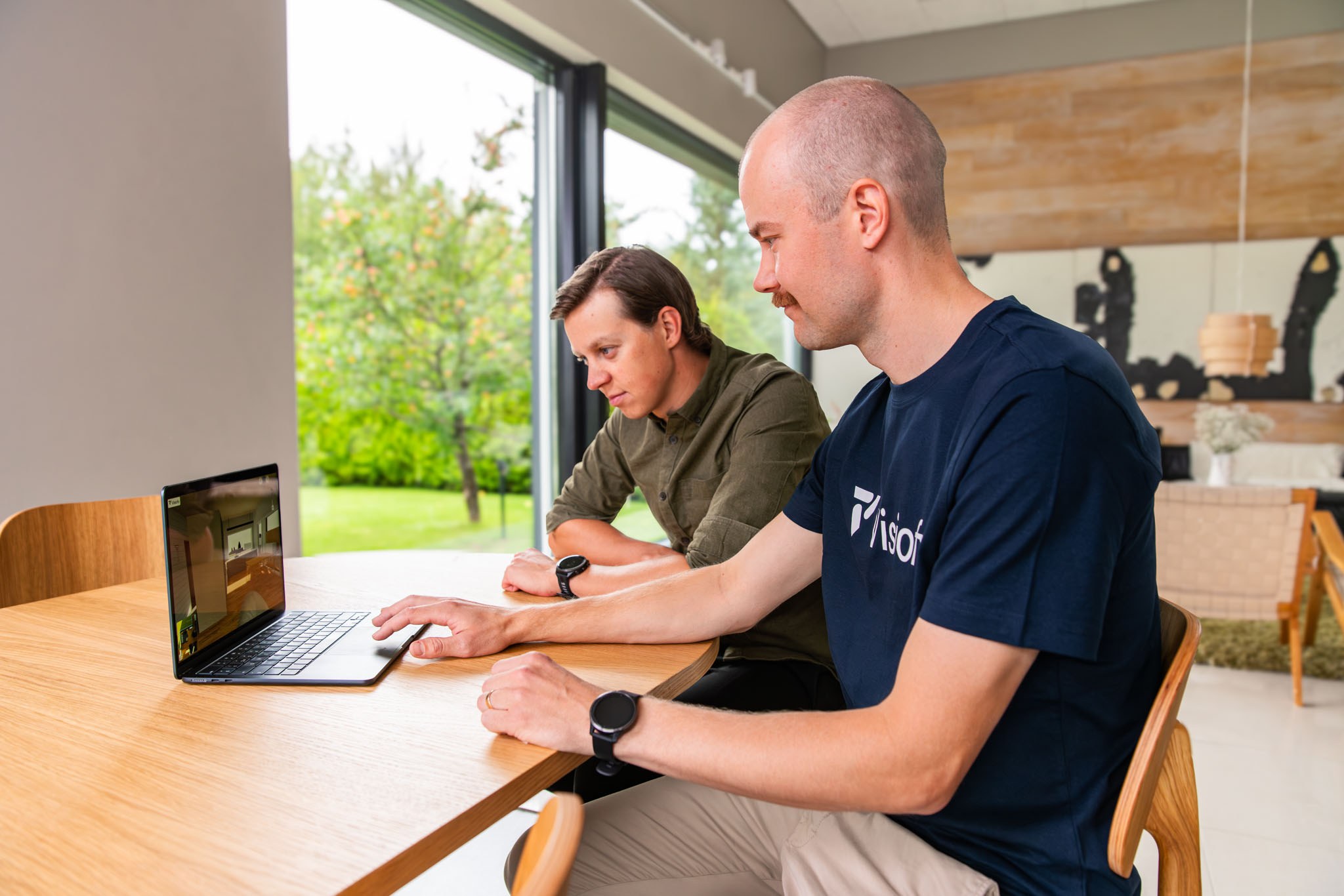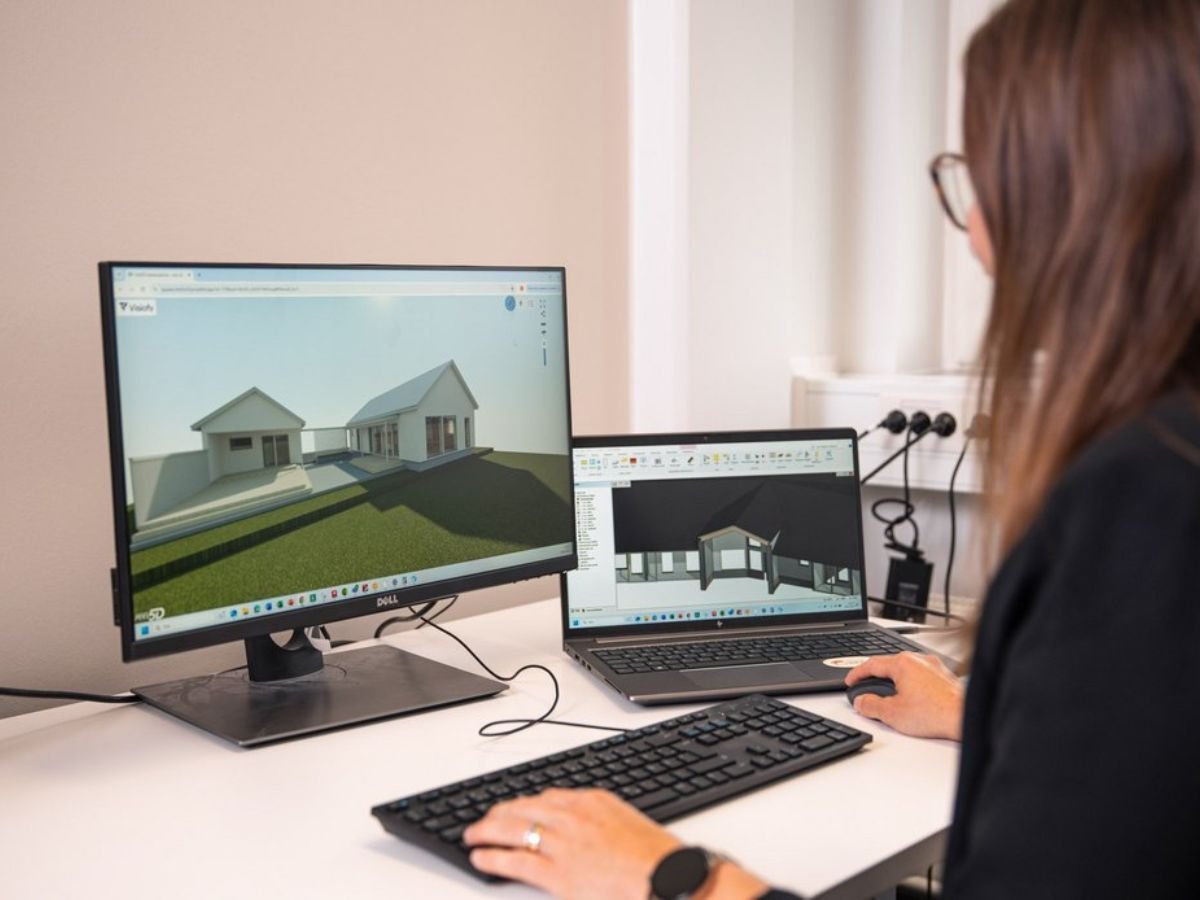
Graphic Design Tips for Architectural Portfolios
Whether you're applying for a job, landing a client, or pitching a competition entry, the design of your portfolio matters just as much as the content inside it.
We’re not saying you need to become a full-on graphic designer — but a little extra attention to layout, spacing, and visual balance can elevate your architecture portfolio from “solid” to “standout.”
Here are some graphic design fundamentals every architect should keep in mind when building their portfolio, plus tips on tools and how to add a little depth with 3D visuals.
Grid Layouts: Your Hidden Superpower
A grid layout isn’t just about lining things up neatly. It helps bring order and rhythm to your pages, making your work easier to navigate and more enjoyable to read.
Start by creating a consistent column system — maybe two or three columns for A4/letter-size pages. Align images, text blocks, and captions to these guides and use them across your entire portfolio to create visual continuity.
If you're new to grids, try starting with simple templates (InDesign and Figma have plenty), and resist the urge to manually eyeball placements. Grids don’t restrict creativity — they support it.
Related read: [Architecture Portfolio Cover Ideas (Your Starting Point)]
White Space: Let It Breathe
White space (aka negative space) isn’t wasted space — it’s one of your best layout tools.
Instead of cramming every inch of your page with text or drawings, give your content room to breathe. White space helps establish visual hierarchy, emphasizes key elements, and improves legibility — especially when dealing with dense drawings or layered diagrams.
Think of white space as the margin around a beautiful building. It frames your content and makes it easier to appreciate.
Color Usage: Subtle, Strategic, and Purposeful
When it comes to color, the safest rule is: less, but better.
Stick to a restrained palette — maybe 2 to 3 complementary colors — and use them to:
-
Highlight project categories or sections
-
Draw attention to key headers or callouts
-
Reflect the tone of your work (soft and neutral vs. bold and contemporary)
If in doubt, let your drawings and renderings bring the color. And avoid using too many saturated tones that could clash or overpower your visuals.
For inspiration on cohesive palettes, check out tools like Coolors or Adobe Color.
Tip: Want to extend your branding even further? Use consistent colors in your cover page and content layout.
Related read: [Architecture Portfolio Cover Ideas (Your Starting Point)]
Recommended Tools: No Fancy Degree Required
You don’t need to be a graphic designer to build a beautiful portfolio. These tools make layout design easier — whether you want full control or plug-and-play simplicity:
Adobe InDesign
Still the standard for layout work. Use master pages, styles, and grids to maintain consistency across multi-page portfolios.
Canva
Beginner-friendly, browser-based, and loaded with templates. Great for students or anyone short on time. Just be sure to customize beyond the default styles.
Figma
Originally for UI design, but increasingly popular for portfolio work. It’s cloud-based, free to start, and excellent for modular, collaborative layouts.
More about the topic: Best Platforms to Build and Share an Architecture Portfolio
📖 Book tip: Graphic Design for Architects: A Manual for Visual Communication by Karen Lewis
Bonus: Use 3D Views to Add Clarity and Depth
Great graphic design isn’t just about how your portfolio looks — it’s about how clearly it communicates.
Sometimes, a static section or axo isn’t enough to convey the full experience of a space. Including perspective views, walkthrough stills, or even links to interactive 3D models can make your layout feel alive — and show your audience how your design actually works in space.
You don’t need to go full CGI to achieve this. A few well-chosen camera views or a walkthrough preview can help bridge the gap between design intent and real-world experience.
Want to take it a step further? Add a link or QR code to a walkable 3D model using tools like Visiofy. It’s a smart way to demonstrate spatial thinking and digital fluency — two things architecture firms and clients love to see.
Related read: How to create an Immersive Architecture Portfolion in VR
Final Thoughts
Great portfolios aren’t just about great projects — they’re about great communication.
By using clean grids, thoughtful spacing, purposeful color, and immersive visuals, you’ll give your architecture portfolio the structure and clarity it needs to stand out — and reflect the same design thinking you apply to your built work.

